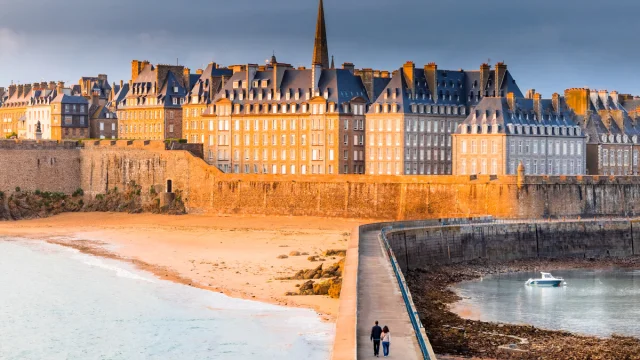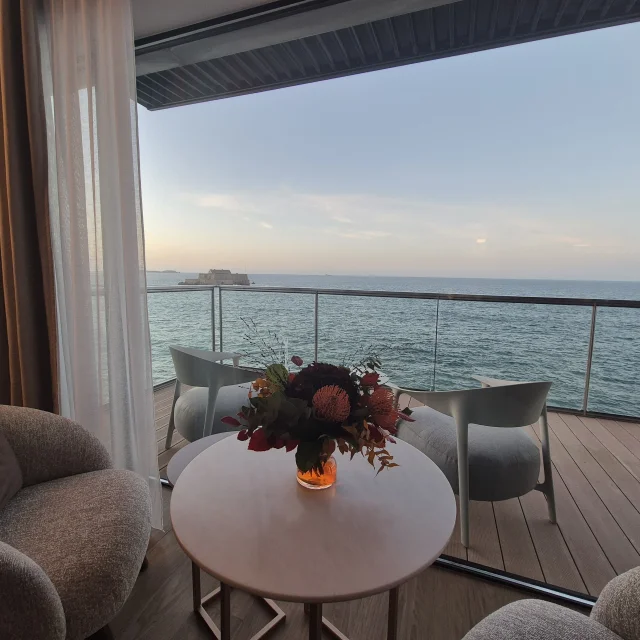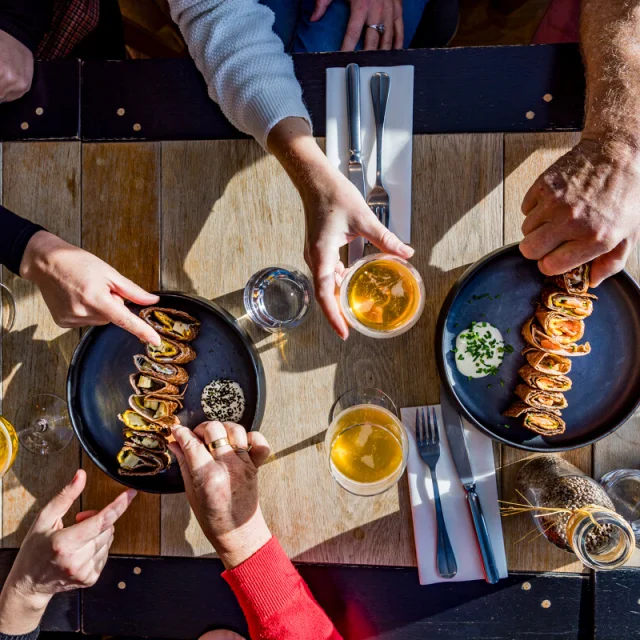The land of granite that has shaped the region, set off on a discovery of its not-to-be-missed châteaux. The Château de Combourg is at the heart of one of the world’s most famous literary movements, Romanticism, in which emotions were multiplied a hundredfold.
Headed by a native of the region: François-René de Chateaubriand.
You’ll have a lot to write about!
 Chateau De Combourg Simon Bourcier 6515
Chateau De Combourg Simon Bourcier 6515Treasure n°6Must-sees in the Romantic Fortress
The mysterious soul!
1.
Le Château de Combourg
Let yourself be overwhelmed by the emotion of discovering the immense fortress in which the writer François-René de Chateaubriand spent his youth. Built on a hill in the 11th century, the castle’s imposing towers dominate the town of Combourg, still steeped in the history of Romanticism. Get ready, a journey back in time awaits you…
 Chateau De Combourg Simon Bourcier 6514
Chateau De Combourg Simon Bourcier 6514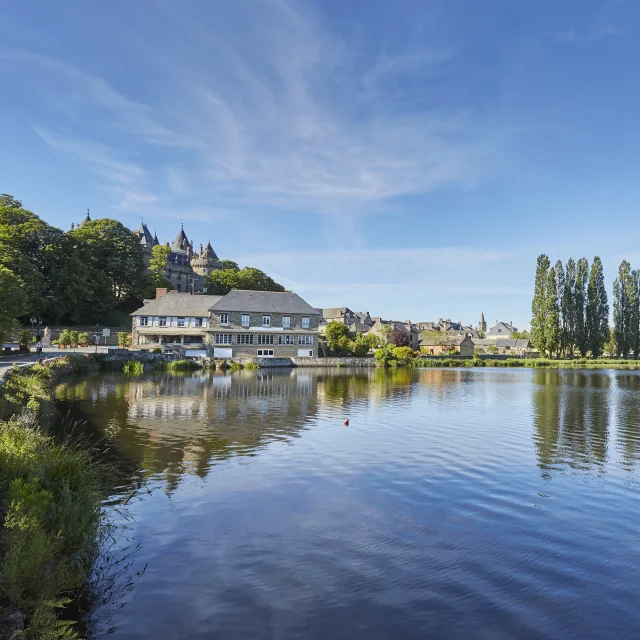 Le Lac Tranquille Combourg Alexandre Lamoureux 723
Le Lac Tranquille Combourg Alexandre Lamoureux 7232.
Le Lac Tranquille
Discover the flora and fauna and the history of Combourg in a different way, on a stroll around the shores of Lac Tranquille. Fancy a peaceful stroll? Enjoy the romantic atmosphere of this place where time seems to stand still. If you’re lucky, you’ll see the town and its castle reflected in the lake’s waters.
3.
Romanticism
“It was in the woods of Combourg that I became what I am,” were the words of the writer François-René de Chateaubriand, inspired by the natural and authentic landscapes he observed as a child, from the château de Combourg. Considered to be one of the precursors of the French Romantic movement, the writer immersed himself in the atmosphere of this charming commune. Like him, let yourself be inspired by the beauty of this verdant bubble!
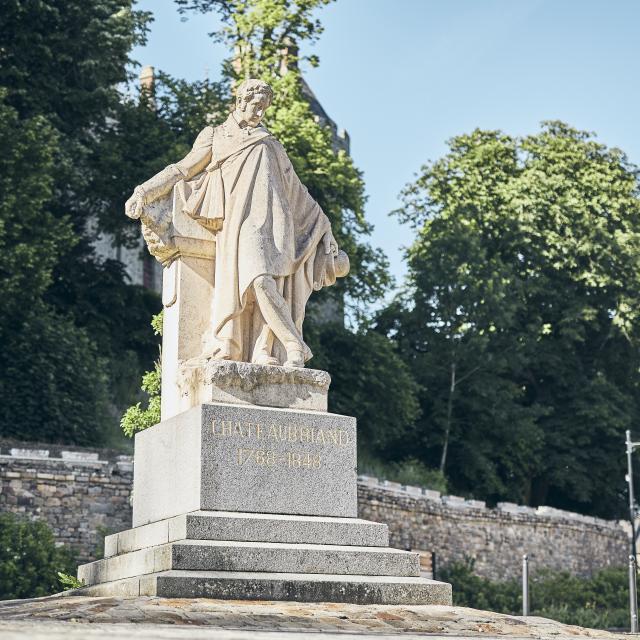 Statue De Francois Rene De Chateaubriand Combourg Alexandre Lamoureux 717
Statue De Francois Rene De Chateaubriand Combourg Alexandre Lamoureux 717 Jardin De Granit De Lanhelin Mesnil Roc H Smbmsm 6855
Jardin De Granit De Lanhelin Mesnil Roc H Smbmsm 68554.
The Granite Garden
17 monumental sculptures by artists from around the world are on display, some of which are up to 5 metres high. One of the works represents a map of Brittany with the 7 varieties of Breton granite.
5.
The covered walkway of the Forêt du Mesnil
The covered walkway, the House of Fairies: In the Mesnil forest, after following small hiking trails, a megalithic site is revealed to you: a 14-metre-long covered alley made up of 41 stones. Let yourself be surprised by the beauty of the site and by the spiritual force that emanates from these stones.
 Maison De La Lanterne Combourg Alexandre Lamoureux 710
Maison De La Lanterne Combourg Alexandre Lamoureux 7106.
Les Maisons de Comboug
La Maison de la Lanterne : A former mansion built on the ruins of a fortified house in 1597, the Maison de la Lanterne was also used as a refuge for soldiers defending the town. Listed as a Historic Monument, this characterful building now hosts exhibitions. Le Relais des Princes: Take a break and stop time in this warm and unusual setting near the Château de Combourg. Built in the 16th century, this half-timbered house was an important coaching inn at the crossroads of Fougères, Dinan, Rennes and Saint-Malo. The Cour du Temple: The Templar House (16th century), known as the “Templerie”, originally belonged to the Commanderie du Temple in La Guerche de Bretagne and was part of the Templar Order. The interior courtyard features numerous architectural elements from the 16th and 17th centuries. During works in 1928, a treasure dating back to the reign of Louis XII was discovered here.
7.
Le château de la Bourbansais
Le château de la Bourbansais was built in the 16th century, on the site of an ancient Gallo-Roman villa. The building retained its original appearance for a long time before being refurbished in the 18th century. Numerous openings were made in the facades, new pavilions were built and the ground floor lounges were fitted out in keeping with the taste of the time, bearing witness even today to the art of living in the Age of Enlightenment. The interior of the house is furnished in period style, with wood panelling and Aubusson tapestries on the walls. There are many curiosities to be discovered, including the dining room with its ceremonial crockery and the small blue drawing room, a masterpiece by the cabinetmaker Mancel. The estate has belonged to the same family since it was built in 1583.
In addition to the main buildings, the estate includes a small 17th-century chapel, a dovecote, working stables and a kennel for hunting with hounds.
The château is surrounded by a formal garden and a kitchen garden classified as a “remarkable garden”, as well as an 18-hectare zoological park created in 1965 and featuring almost 400 animals, some of which are endangered species.
 ©Rodolphe Marics - Pleugueneuc
©Rodolphe Marics - Pleugueneuc